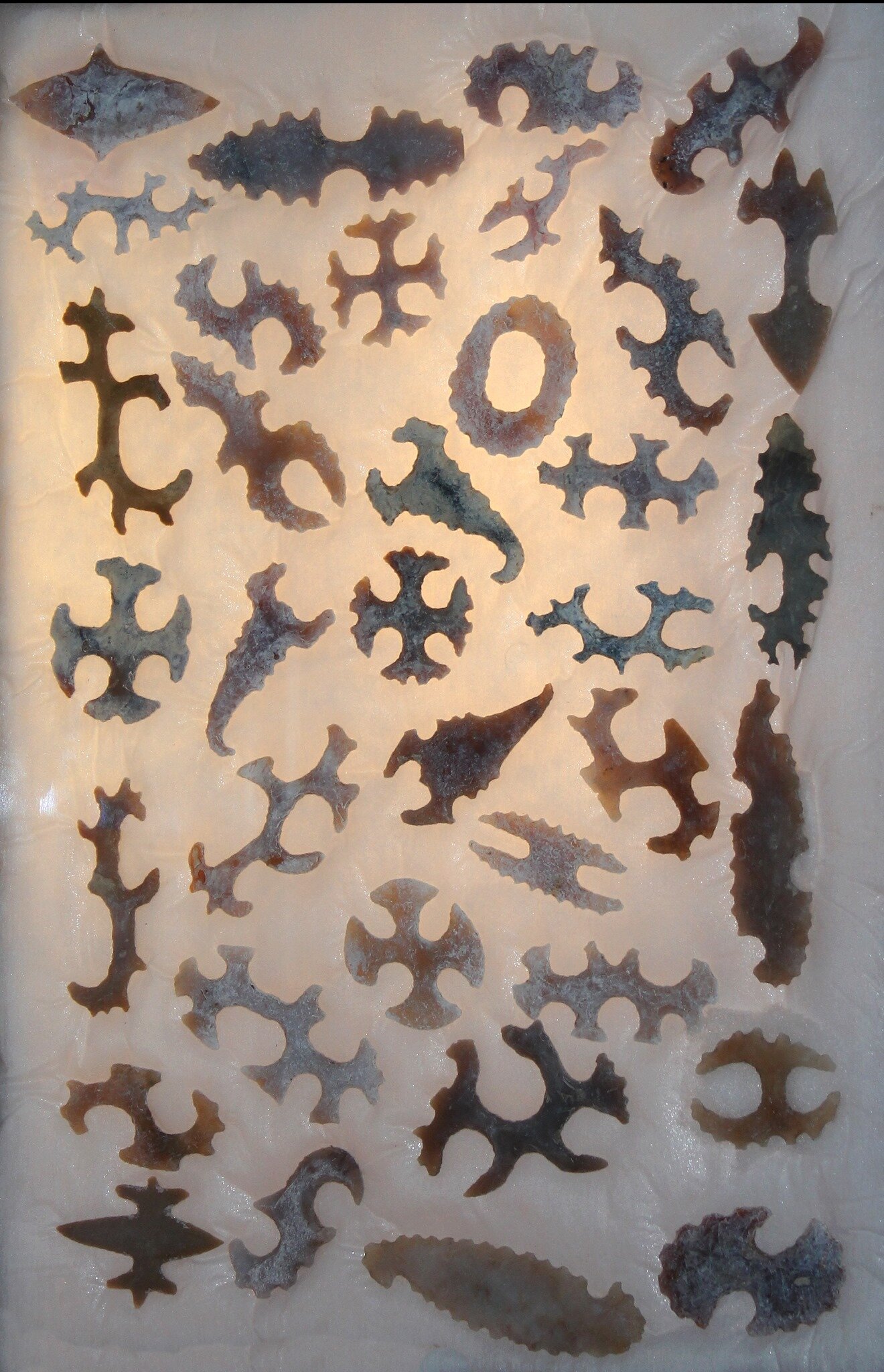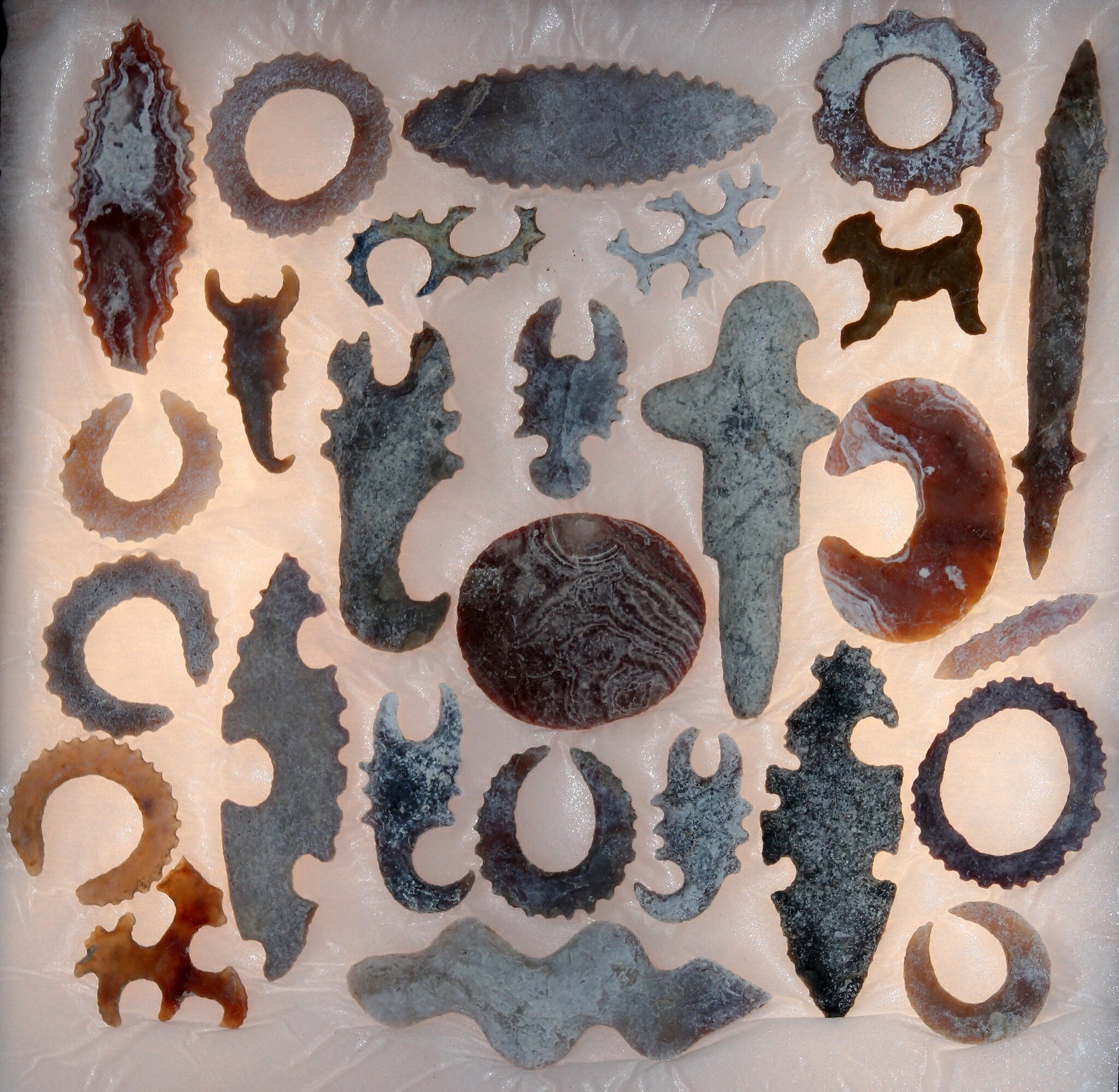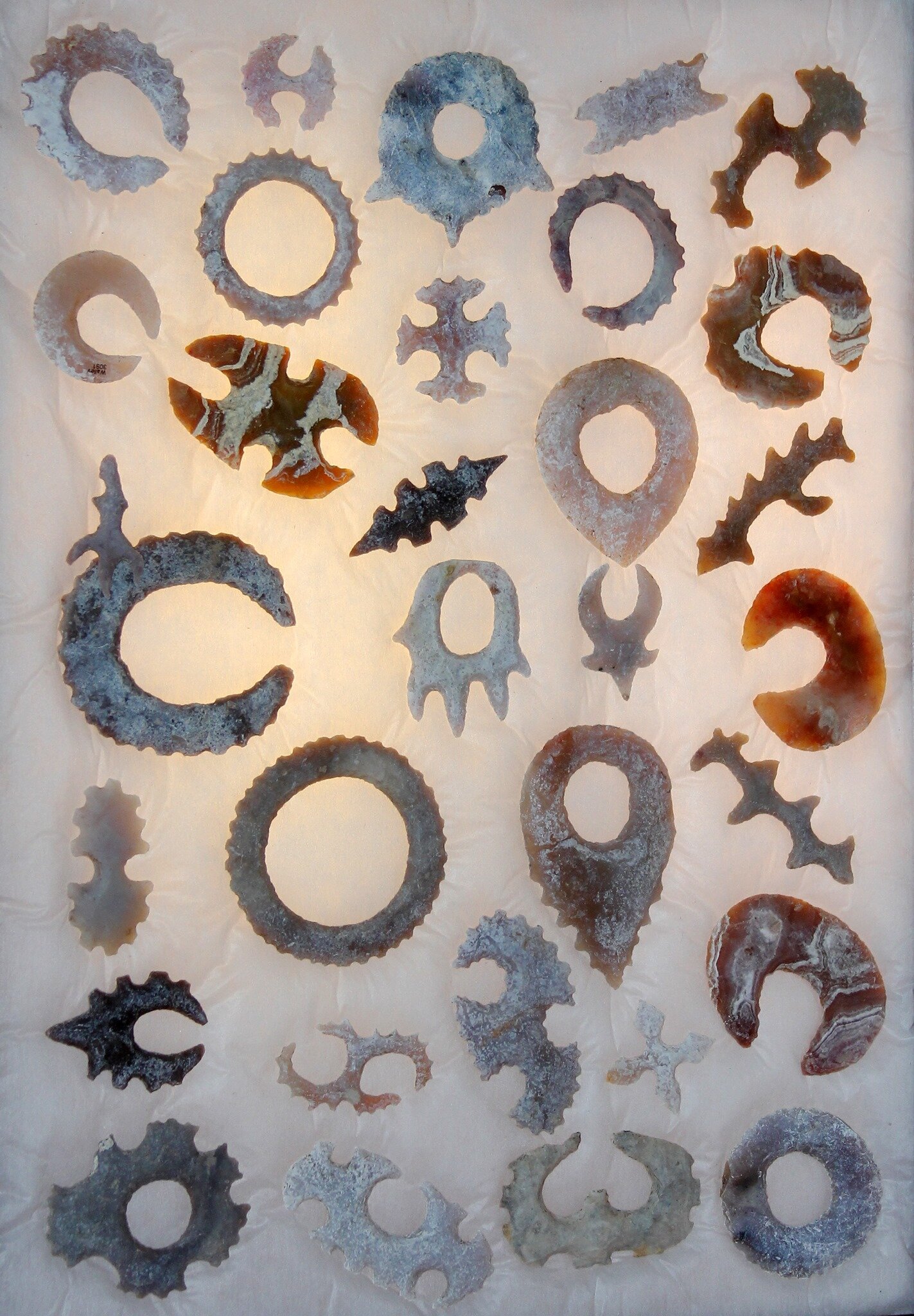Maya Eccentrics
The Mayan civilization rose to prominence from 250-950 A.D. in what is known today as southern Mexico, Guatemala, northern Belize, and western Honduras. They are mostly associated with their cultural advances in mathematics, architecture, astronomy, visual arts, and the Mayan calendar inspired by their philosophy of life- nothing has ever been born and nothing has ever died. Of course, this encouraged their beliefs in gods and the cosmos. The complexity of their beliefs is displayed beautifully by this specialized group of stone carvings called “eccentrics” found near Melchor de Mencos, in Guatemala.
The innovation of the Mayans developed from thousands of years of cultivating skills, knowledge, and influence starting with the Archaic Period in 7000 B.C.E. How do the eccentrics fit into this time process and cultural development? When early Mesoamericans discovered that flint could strike fire, they highly valued it because they associated it with lightning. They believed the source of their flint to be where lightning struck the ground. Over time as the Mayans progressed their flintknapping skills, eccentrics were made from varieties of chert, chalcedony, and obsidian. However, the source of the obsidian has yet to be found in this region of Mesoamerica suggesting that the material was of extensive intertribal trade. It was not until 600 CE that the Mayans refined their flintknapping skills creating thin, flat, and intricate blades that not even the most skilled flintknappers today could achieve.
Believed to have been produced in lithic workshops by Mayan specialists, the knapping process is said by Maya archaeologist and scholar David Freidel to have required the concentration of a chess master. From the start, the first blow to the flint determined the shape of the eccentric, and from there, flaking and pressure were worked thoroughly on the piece to create the desired shape. In this collection, the majority of desired shapes created were zoomorphic, meaning they represent animals. Many different animals can be seen such as scorpions, snakes, centipedes, and a debatable dog or monkey. Some, however, represent inanimate objects such as mace heads and clubs, and if you can spot it, there is even an anthropomorphic representation of a human head. Another popular eccentric shape found in other Maya eccentric groups includes the Mayan god K’awiil, which, ready for it, was the god of lightning, and was often profiled in obsidian!
Though little else is known about the Maya eccentrics, based on where they have been excavated and the conditions of which they are in today suggests that they had no utilitarian purposes and were used in ceremonies. Eccentrics are typically found as a group in a cache underneath a stelae, and occasionally in elite tombs, as offerings. Some are found to have a “tang” that indicates they were possibly attached to a shaft, lance, or scepter. They are found in “mint condition” and show no signs of wear or usage as they are incredibly sharp but too fragile to use for cutting. The complexity of Maya eccentrics was admired by Maya people and today are highly praised for their exquisite aesthetics.
Blog by Makenzie Milliken
References:
“In Focus - Maya Eccentric Flint Blades.” DMA Collection Online, 2017, collections.dma.org/essay/xj3Pm1Nw.
Mark, Joshua J. “Maya Civilization.” Ancient History Encyclopedia, Ancient History Encyclopedia, 14 Dec. 2020, www.ancient.eu/Maya_Civilization/.
Joyce, T. A. “Presidential Address. The ‘Eccentric Flints’ of Central America.” The Journal of the Royal Anthropological Institute of Great Britain and Ireland, vol. 62, 1932, pp. xvii-xxvi. JSTOR, www.jstor.org/stable/2843874.
Simon Fraser University Museum of Archaeology and Ethnology and Learning and Instructional Development Centre. “Featured Artifacts: Mayan Eccentric Flints.” ¡Hola Canada!, web.archive.org/web/20141102160800/www.sfu.museum/hola/en/artifacts/featured/17/.
Rice, Prudence M. “CONTINUITIES IN MAYA POLITICAL RHETORIC: K'AWIILS, K'ATUNS, AND KENNINGS.” Ancient Mesoamerica, vol. 23, no. 1, 2012, pp. 103–114. JSTOR, www.jstor.org/stable/26300603.




